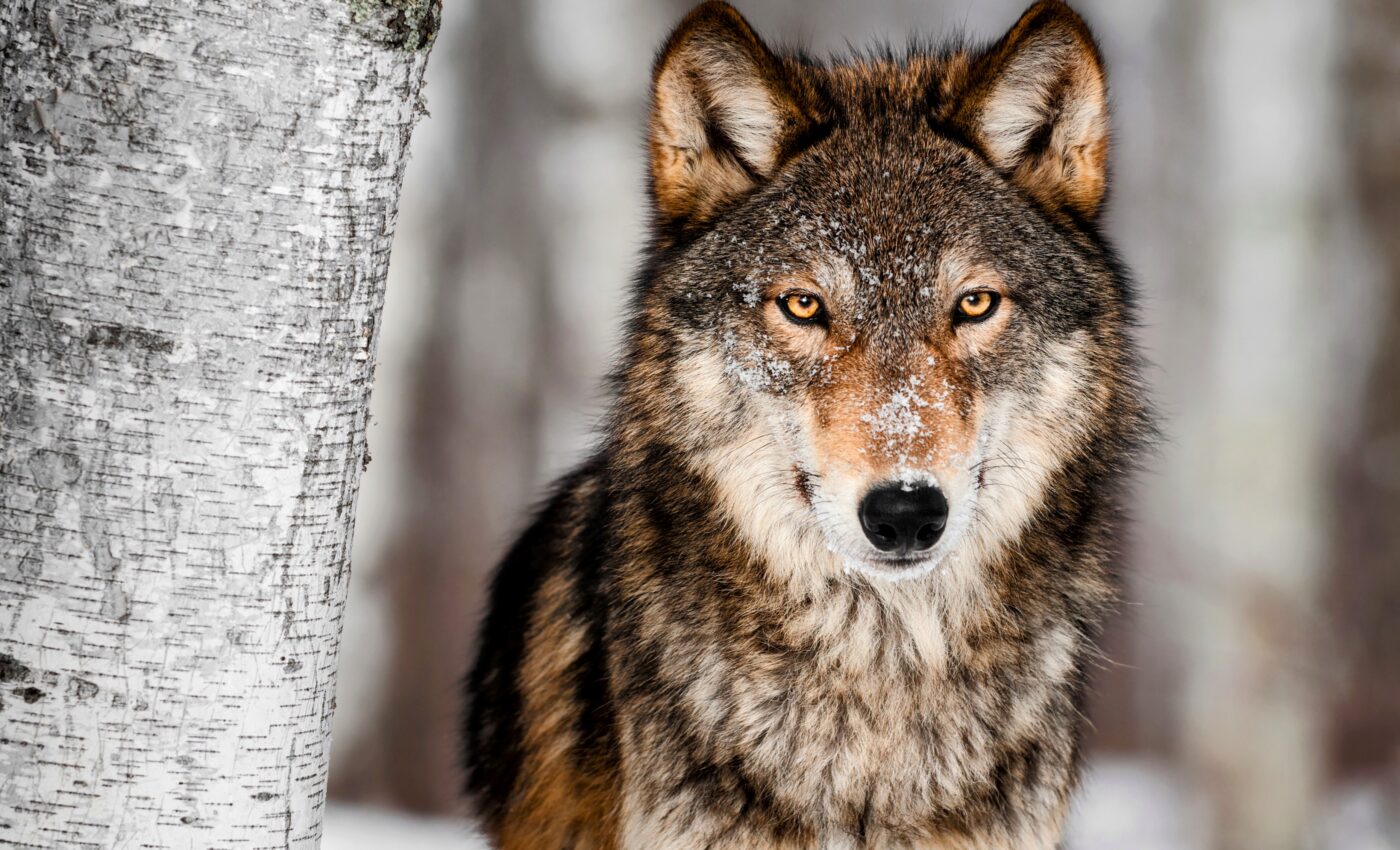
The return of the gray wolf: Triumph or tragedy?
Gray wolf populations in the United States have seen a remarkable resurgence over the past three decades. Once pushed to the brink of extinction, these majestic creatures now roam freely across a vast expanse of the nation.
While the recovery efforts have been heralded as a success, the growing populations of wolves are now facing substantial threats as they attempt to colonize human-dominated areas.
Remarkable challenges
In the journal BioScience, wolf specialists David E. Ausband and L. David Mech delve into the conservation scene, shedding light on the challenges these returning wolves encounter. “Remarkable wolf conservation success yields remarkable challenges,” said the experts, noting that a staggering 6,000 wolves have reclaimed territories across 11 states.
While this might sound like a celebration, the narrative is not that simple. These returning wolves are stepping into landscapes that have changed dramatically since they last roamed there.
As Ausband and Mech highlight, emerging wolf populations grapple with “fragmented habitats and barriers to dispersal,” resulting in increased confrontations with humans, pets, and livestock.
Rising concerns
The burgeoning gray wolf populations haven’t just raised eyebrows in the scientific community – they’ve also stirred the pot politically. Addressing rising concerns regarding wolves preying on domesticated animals and reducing prey populations, several areas have responded with decisive actions.
In Wisconsin, for instance, “the legislature requires a public hunting or trapping season whenever wolves are delisted from the US Fish and Wildlife Service’s (USFWS) list of Endangered species.” In Colorado, on the other hand, wolves are celebrated and a recent ballot initiative has given the green light for their reintroduction.
Potential ripple effects
While supporters of their reintroduction might be a beacon of hope for the gray wolf in the short term, Ausband and Mech warn of the potential ripple effects. Such initiatives could inadvertently establish a legal groundwork that obstructs future reintroductions, thereby complicating the entire management process.
The experts express concern that an unstable regulatory environment could trigger dramatic swings in wolf numbers, jeopardizing the very conservation efforts that led to their resurgence.
Meticulous management is needed
So, what’s the path forward? According to Ausband and Mech, the key lies in meticulous management that prioritizes the myriad of stakeholders involved.
“Future wolf conservation in the United States will be affected by the ability of managers to predict colonization and dispersal dynamics, to reduce hybridization and disease transmission, to mitigate and deter wolf–livestock conflicts, to harvest wolves sustainably while satisfying diverse stakeholders, to avert a reduction in tolerance for wolves due to a disinterest in nature, and to engage diverse stakeholders in wolf conservation to avoid management by ballot initiative or legislative and judicial decrees.”
More about gray wolves
Gray wolves (Canis lupus) are fascinating creatures with a complex history and a wide range of behaviors and adaptations. They are a symbol of the wild, representing both the challenges and the potential of conservation in the modern world.
Distribution and habitat
Historically, gray wolves were found throughout much of North America, Europe, and Asia, making them one of the most widely distributed land predators in the world. However, human activity, including habitat destruction and hunting, can greatly reduce their numbers and range.
Physical characteristics
Gray wolves vary in color from grizzled gray or black to all-white. Adults typically weigh between 40 and 175 pounds, with males being larger than females. They have a strong physique, with powerful jaws capable of generating tremendous biting pressure.
Diet and hunting
Wolves primarily prey on large ungulates like elk, deer, and bison, but they can and will eat smaller prey if necessary. Wolves are pack hunters, relying on cooperation and strategy to take down prey much larger than themselves.
Social structure
Gray wolves are known for their complex social structures and live in packs. A pack generally consists of an alpha male and female, their offspring, and sometimes unrelated wolves. They communicate using vocalizations, body postures, and scents.
Reproduction
Mating typically occurs between February and March, with a gestation period of about 63 days. Litters can range from 1 to 11 pups, with the average being 4 to 6. Pups are born blind and defenseless but grow quickly.
Cultural significance
Wolves have been a part of human folklore, myths, and legends for millennia. In some cultures, they are revered and considered sacred, while in others, they’re seen as symbols of danger or evil. Their perceived cunning and communal hunting tactics have both fascinated and frightened humans.
Human-wolf conflict
As wolf populations recover and expand, they sometimes come into conflict with humans, especially in areas where they prey on livestock. This has led to tension between conservationists who wish to protect wolves and ranchers or farmers who view them as threats.
—-
Check us out on EarthSnap, a free app brought to you by Eric Ralls and Earth.com.













